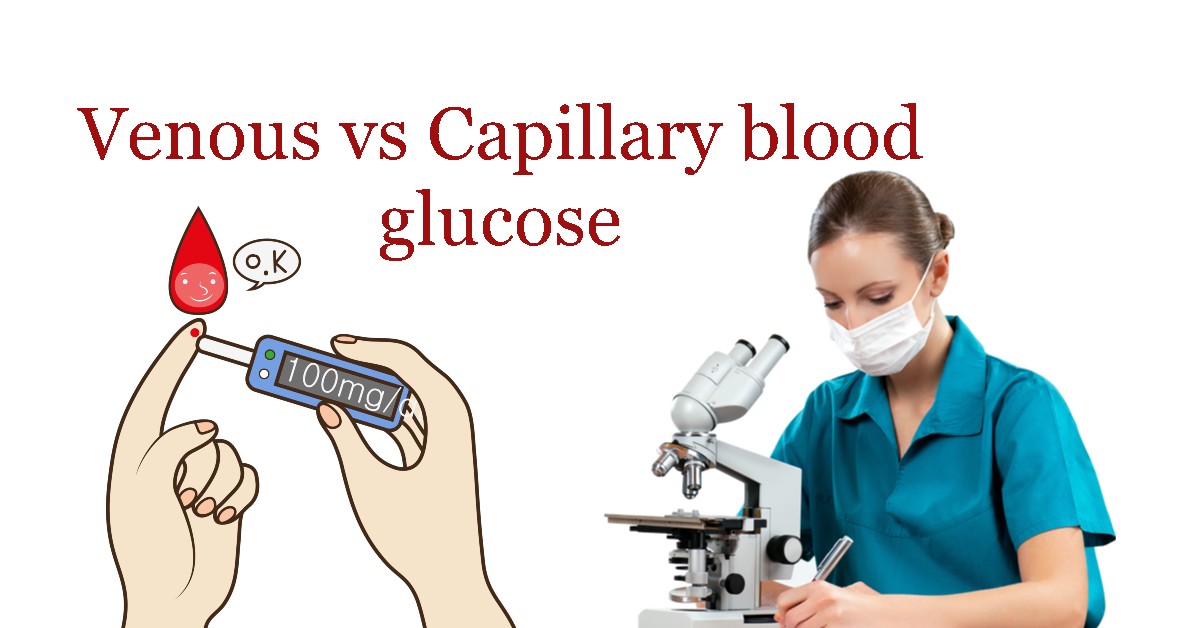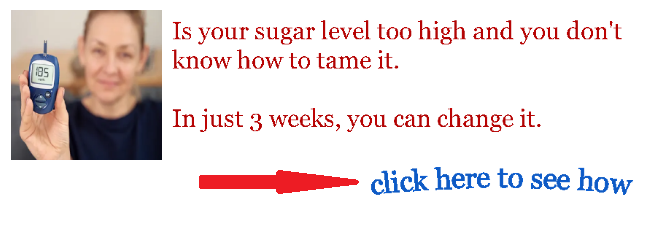When we were at school, we briefly learned about capillaries, veins, and arteries. The three major blood vessel types. It is only when you go to medical school that you learn more about these blood vessels. Unless you are a diabetic. Then you quickly become accustomed to the terms used when the doctor needs to check your blood glucose. This is mostly done via the capillary vessel with a glucometer. But let’s take a closer look at capillary blood glucose.
Venous vs Capillary blood glucose
A study was done where 20 patients above the age of 13 were enrolled. They did both a venous and capillary blood glucose test to measure the difference between the two. The venous blood glucose test was sent to the laboratory for testing, while the capillary blood glucose test was done with a glucometer. They found the laboratory venous blood glucose to be 7.075 mmol/l, while the capillary blood glucose was 7.66 mmol/l. This gave a difference between the two blood glucose measurements of 0.58 mmol/l.
The conclusion that they drew from this was that although the venous blood glucose and the capillary blood glucose levels had a marginal difference, they had to take into consideration the constant fluctuation of blood glucose levels. Thus came about the early intravenous cannula insertion. With this it enabled hospital staff to readily have available blood glucose testing, thus removing the need of constant finger prick samples.
Both venous and capillary blood glucose testing has been under question, debating on which one is better and more accurate. It was found that venous blood glucose testing was more accurate, and with the technology at the bedside of the patient, it cut out the need to constantly send samples to the laboratory. Disregarding that, the conclusion was that laboratory blood glucose testing was still the most accurate of all, and should be employed in extreme cases of long-term patients. To read more about this study, click on the link Capillary versus venous bedside blood glucose estimations | Emergency Medicine Journal (bmj.com)
Why do you wipe the first drop of blood?
This is a loaded question in the medical society. Do you wipe the first drop of blood with the testing strip, or do you use the second drop after wiping the first drop of blood away with a sterile piece of gauze? It is debatable, and up to each emergency department and doctor. Some may prefer to use the first drop of blood, while others will use the second drop of blood. A study done by Dr. Susan Fetzer showed that the effect of alcohol swabbing on capillary blood glucose measurements rendered a clinically insignificant difference, and thus showed that even if a 70% isopropyl alcohol swab is used, it is not necessary to wipe away the first drop of blood.
The use of alcohol swabbing on capillary blood glucose measurements are a standard for both private doctors as well as hospital doctors and hospital staff. This is especially true when an emergency patient comes in, where there is no time to set up a venous blood glucose measuring kit. This requires a simple swab and prick situation.
The reasoning behind swabbing the fingertip with an alcohol swab on capillary blood glucose measurements is quite simple; the sample may be altered by whatever is present on the fingertip. But still the controversy remains. Many do believe that the alcohol of the swab alters the results of the sample, while others argue that many patients cannot produce a second drop of blood. Since capillary blood glucose levels is extremely important to monitor critical patient care decisions, many has decided to forego the swabbing away of the first drop, and simply use it as the sample for the strip. The danger does remain that inaccurate capillary blood glucose values may lead to dangerous episodes of hyperglycaemia or hypoglycaemia.
For outpatients, the use of alcohol swabbing preparation pads are normally not used. They are simply instructed to thoroughly wash their hands before performing a capillary blood glucose values test. This is why it is so important for outpatients to keep an accurate account of their results, as this may indicate extreme differences in capillary blood glucose values if they are hospitalized.
In the same study, a group of 192 volunteers consented to two capillary blood glucose tests. All the participants were asked to thoroughly wash their hands. Thereafter one capillary blood glucose level was taken without further prepping of the finger, while the other finger was swabbed with an alcohol prep pad. The samples were taken within 2 minutes of each other. Their findings showed that the fingers prepped with an alcohol swab yielded results of 10.44 mg/dL lower than the fingers that were not prepped. This would ring bells as being clinically significant.
In another study done by the same team, 526 patients with type 1 and type 2 diabetes were selected for the study. They took capillary blood glucose sampling where the finger was prepped with an alcohol swab and dried before piercing the skin, then they took a sample where the second drop was taken, and finally they took a venous blood sample to be analysed in the laboratory. Of the three, they found no statistically significant differences in blood glucose readings. They concluded that the fact that the alcohol was allowed to dry before piercing the skin is what made a difference. Unfortunately this is not common practice amongst nursing practice. For more information on this study, please follow the link The Effect of Alcohol Prep Pads and Blood Drop Number On Capillary Blood Glucose Values (unh.edu)
Capillary blood glucose testing
Before capillary blood glucose testing became standard practice, glucose urine testing was the norm. This proved to be a very inaccurate way of determining blood glucose levels. The glucometer was first introduced in the 1970s, but this also proved to be quite inaccurate.
In 1980 the Dextrometer was launched, and it was a game-changer. It gave patients the freedom to safely check their capillary blood glucose levels at home, and to monitor their blood glucose levels. As medicine advanced over the years, the importance of cleaning a site with an alcohol swab became standard practice. As discussed above, this came with its own set of arguments. The fact of the matter is that patients could monitor their own capillary blood glucose levels without having to go into a hospital each time to have a venous blood glucose test performed. Especially with blood glucose levels fluctuating constantly, the wait for laboratory test results was problematic, and could be fatal for some patients.
Capillary blood glucose testing gave them the tool to monitor themselves, or allow others to do so if they suspected hypoglycaemia or hyperglycaemia. Capillary blood glucose testing also gave ambulance staff and emergency department staff the tools to quickly and effectively diagnose a patient and act accordingly by using capillary blood glucose testing. The effect of alcohol swabbing on capillary blood glucose measurements became a secondary concern over the saving of a patient’s life, as the data available is still widely debated.
Capillary blood glucose levels
Monitoring your capillary blood glucose levels is extremely important if you are a diabetic. With so many things affecting your blood glucose levels, you need to know what is normal and what is dangerous. Everything from what you eat and drink, to how much you exercise, has an effect on your blood glucose levels. So what is normal, and what is dangerous? When looking at a normal fasting blood glucose level, a range within 70 to 99 mg/dL is a normal blood glucose level. A blood glucose level of 100 to 125 mg/dL puts you in the range of pre-diabetic. A blood glucose level of 126 or higher means that you are probably diabetic, and should go to your doctor for further testing and diagnosis.
What puts me at risk?
There are a couple of factors to look out for that would make you a high-risk for developing diabetes. Some of these include individuals who are overweight or obese, people over the age of 45, individuals with high blood pressure, and people of certain ethnicities. But diabetes is not a death sentence if properly managed. You can still live a full, active life.
In Hollywood there are stars such as Tom Hanks, Salma Hayek, Nick Jonas, and Randy Jackson who lives with diabetes as a constant companion. In the sports world we have stars such as Jay Cutler (former football quarterback for multiple teams), Bill Carlson (Ironman triathlete), Pamela Fernandes (Olympic gold medal cyclist), Billie Jean King (tennis legend), and Mark Lyle (professional golfer), just to name a few.
Knowing that exercise affects blood glucose, it is good to know that these people are able to live a full life with this disease. It is not a death sentence if properly monitored, and that is why the glucometer is so important, and why a journal of your capillary blood glucose readings will help you to reach your full potential, in spite of having diabetes.
Natural blood thinners
If you are interested to find out how food or drink affects our blood condition you feel free to visit HematicFood channel on YouTube. You just interested in a natural blood thinners then you can on this link natural blood thinners


